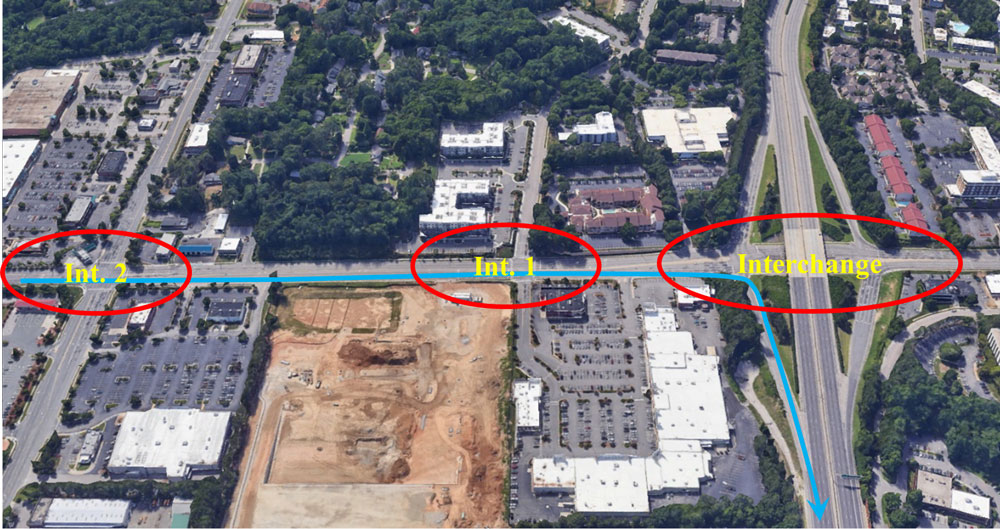Dr. Ali Hajbabaie of North Carolina State University (NCSU) and a team of researchers, which include Dr. Lily Elefteriadou of the University of Florida Transportation Institute (UFTI) and Dr. Mohammed Hadi of Florida International University (FIU), are working on a STRIDE-funded project that aims to reduce congestion along freeway and arterial facilities.
Specifically, the research will focus on traffic congestion at the intersection of arterial corridors and freeway facilities by controlling the movements that feed the freeway from the adjacent traffic signals on the arterial and/or interchange. An example of this would be the eastbound right and westbound left movements that feed the freeway southbound (see image below).

“We plan to do this timing traffic lights at the interchange and ramp metering signals on on-ramps to freeway facilities in coordination,” he said. “By doing this, we expect that traffic control decisions will be made based on traffic congestion in the freeway facility and arterial corridor.”
Dr. Hajbabaie and his team also plan to evaluate de-facto metering. De-facto metering is defined as using traffic signals at the interchange for traffic metering. This approach could be useful when metering signals are not installed but traffic congestion is high. The research plan includes using the signals on the interchange and those in the upstream intersections for metering the demand toward the freeway facility.
“In places where ramp metering signals are not economically permissible, but where ramp metering could be effective, transportation professionals will be able to see how much metering they can achieve by the de-facto metering process,” Dr. Hajbabaie said.
It is expected that STRIDE Project B4 – Integrated Corridor Management: Cooperative Signal Control with Freeway Operations and Ramp Metering will produce a tool for signal controls to allow ramp metering in the absence of metering signals and a set of guidelines on how to time signals on arterial streets that are upstream of on-ramps to control excess traffic. An additional tool will focus on ramp metering based on signal timing information and guidelines for ramp metering to avoid upstream signal blockage when there is a long queue on the on-ramp. It is expected that this project will yield a tool and set of guidelines for cooperative corridor management to minimize congestion.
Because this research will produce methodologies with the potential to quantify the benefits of a coordinated ramp metering and signal control process, transportation professionals will be able to better measure the benefits of this coordinated traffic control approach.